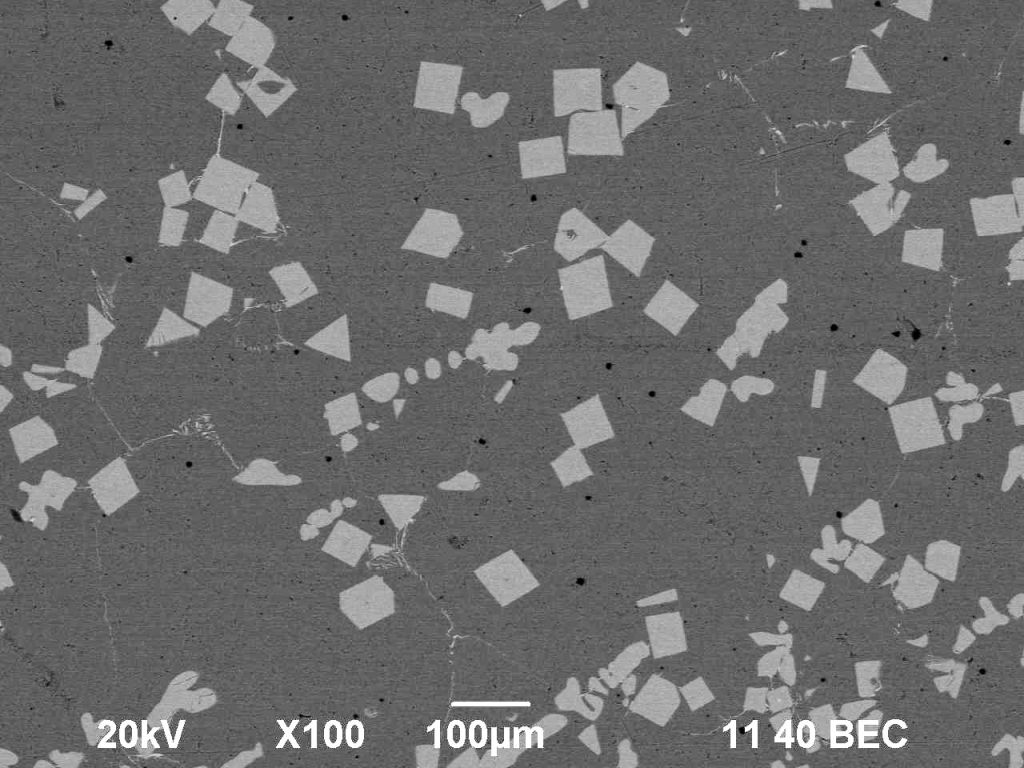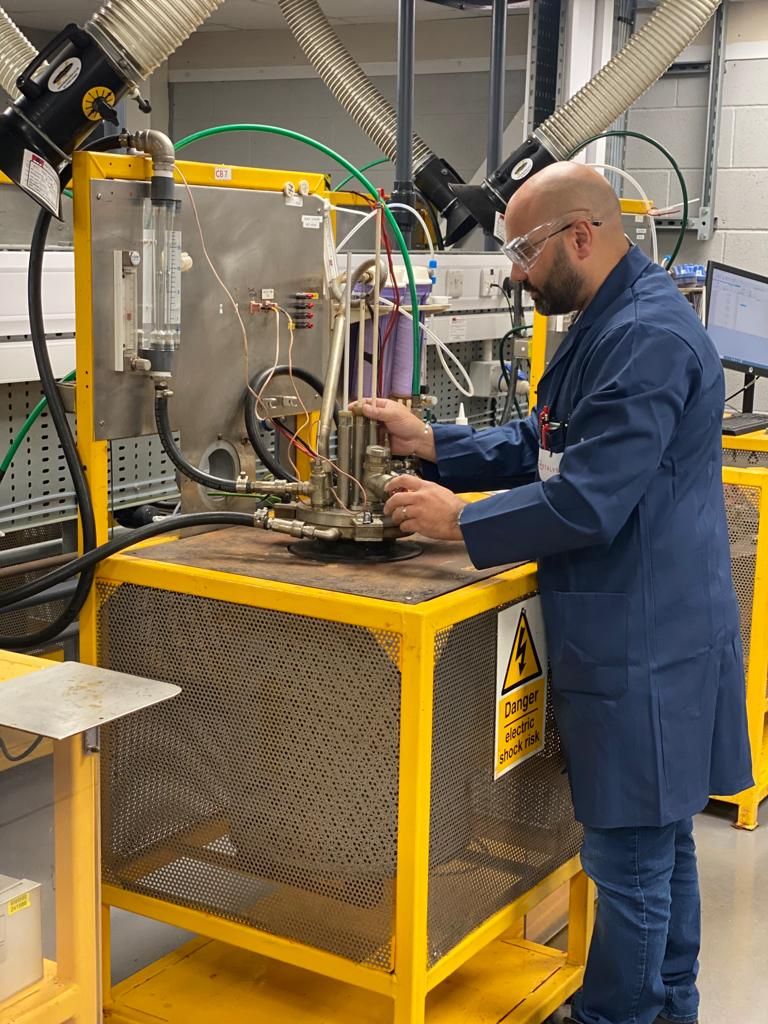A new era for metal powders

In this Q&A article Dr Ian Mellor, managing director of Metalysis, discusses the company’s development of new complex metal powder alloys that offer significant material characteristics for the latest aerospace applications.
Through its patented technology Metalysis can create complex new alloy powders unable to be produced using traditional methods. These materials offer many advantages for diverse applications in industry, especially for additive manufacturing (AM).

Dr Ian Mellor joined Metalysis in 2004, holding various technical and operational positions, before transitioning into managerial and director-based roles. He is a PhD scientist with experience developing and commercialising cutting-edge technology in various surroundings, ranging from academia, multi-national FTSE 250 listed organisations, and start-up ventures. He is also an internationally recognised authority in metal powder production, expert public speaker and technical author.
Q) Firstly, can you explain the process Metalysis has developed for new metallic metal powders?
Metalysis uses an electrolysis process to reduce metal oxides into metal powders, binary through to multi-component complex alloys and intermetallics. Using an electrolyte of calcium chloride, which is environmentally benign and commonly used to de-ice roads, we reduce the metal oxide into a metal powder whilst removing the oxygen. The Metalysis process does not require the melting of these oxides and so is significantly less energy intensive than traditional methods so we are able to alloy elements which have widely divergent physical properties – e.g., metals with a 2,336°C difference in melting points. The process is applicable across 49 elements of the periodic table, so Metalysis can produce alloys and the next generation of complex or high entropy alloys – where traditional methods struggle or are economically prohibitive.
Q) What is a high entropy alloy (HEA) and what benefits do they offer when used in aerospace engineering applications?
A high entropy alloy is a new type of alloy – by convention consisting of five metals – which have in the past proven extremely difficult to produce given that metals have such different physical properties which make them difficult to alloy together.
Traditional alloys consist of one or two major component metals with smaller amounts of other elements – an HEA consists of equal proportions of its constituent metals which are diffused equally throughout the new alloy. Combining metals in this way means you can create a new generation of consistent alloys, which can provide improved heat resistance, strength, fatigue-resistance, corrosion-resistance and fracture-resistance at elevated temperatures – ideal for aerospace applications.
Q) Can you tell us more about your aluminium-scandium master alloy; what are the benefits?
Metalysis has been able to create an aluminium-scandium (Al-Sc) master alloy with 36% scandium weighting, an alloy that traditional manufacturers struggle to produce. The 36% weighting scandium results in a more consistent material whilst allowing the end-user additional flexibility regarding the scandium level present in the final product as it can be reduced down from 36% which means reduced transportation costs as essentially large weightings of aluminium are not being shipped around the world.

As scandium production is increasing - thanks to new mining in Australia, Canada and the US - it means it’s becoming a more economically competitive metal and has long been highly regarded for its strengthening and light-weighting qualities.
Metalysis has worked with partners to create an aluminium-scandium sputtering (metal depositing) target for use in the production of 5G networks and AI. Chips used in 5G and AI are dusted by the sputtering target. These Al-Sc coated chips are highly resilient and maintain their functionality when compared to traditional materials.
For aerospace, we are targeting this aluminium-scandium master alloy for its lightweighting and structural properties. In relation to achieving net-zero, it can be employed in heat exchangers/radiators, condensers and anywhere you need to remove heat – as well as fuel cell manifolds.
Q) What are the most demanding requirements of these alloys for aerospace applications?
Al-Sc diluted to less than 2% also has application in aircraft airframes, wings and engines, giving a 10% energy saving, where a 0.7% Sc loading gives 20% reduction in jet weight. There is growing demand for >2% Al-Sc for use in UAVs and drones as it provides lightweighting for speed and resilience.

With HEAs, we have been working on alloys that exhibit improved strength at elevated temperatures and under extreme environments. We have a number of candidate HEAs we are pursuing, such as Al20Mo10Nb20Ta10Ti20Zr20.
Q) Once a powder has been produced how is it processed further?
The output is lightly crushed or milled, then washed. There are no hazardous chemicals used, just washing in water or dilute acid. Metalysis powders can be spherodised, and we are finding there is interest in metal alloys that can be used via powder metallurgy routes, such as HIP or AM processes.

The benefit of the Metalysis process for AM is that during electrolysis we can control the particle shape and size, meaning we can produce near 100% of required powder in a given range. There is much interest in metal grade powders for Al-Sc sputtering targets or indeed tantalum powders for sputtering targets which are used in the production of semiconductors.
Q) What is your engagement with the industry OEMs, Tier 1 companies etc.? How do you work in collaboration with them?
When working with aerospace companies, we develop bespoke materials using our Gen 1 and Gen 2 R&D reactors. There has been interest in Al-Sc, HEAs – as well as titanium alloys. We are also working with a number of national military labs with much interest regarding HEAs, as Metalysis can make them commercially, efficiently and economically.
Q) Do these materials offer much potential as we move towards electrification/hydrogen powered modes of transport, especially in aerospace?
Metalysis is committed to the green revolution and Net Zero. Our production process is itself leaner, greener, and cleaner than traditional methods. New alloys offer the chance to reduce weight in aerospace applications, whilst HEAs can revolutionise the design and application of metals so making them lighter giving longer fuel use or able to create resilient hydrogen energy production.
Q) What is the Metalysis growth plan?
We have recommissioned our Gen 4 industrial unit – which gives between 10–20 tonnes output depending upon density of the oxide feedstock and are focused on tantalum (for capacitors and sputtering targets for use to coat semiconductor parts used in electronics and electric vehicles), Al-Sc (for 5G and AI networks and heat exchangers) and HEAs.
Metalysis will build multiple Gen 4 industrial units which can provide for titanium alloy production and other rare earth metals; neodymium iron boron which creates the strongest magnets being an area of focus. The current plan is to have 3 Gen 4 units ready by end 2023, with a significant ramping-up of capacity thereafter.












